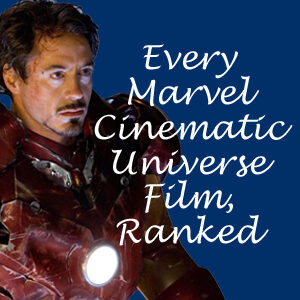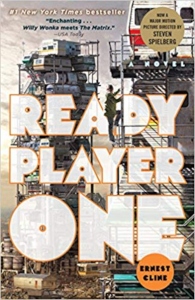Earlier this decade, Ernest Cline pulled off a remarkable feat: He got seemingly everyone who grew up in the 1980s to read his very first novel, “Ready Player One” (2011). Friends who never talked about books told me to read “Ready Player One.” Friends who claimed they never read books told me I’d love “Ready Player One” and would blast right through it. With Steven Spielberg’s adaptation hitting theaters late last month, I was overdue to crack it open.
The hype is accurate — but not just because of the pop-culture references that are part and parcel of the central virtual reality quest our hero, Wade Watts, embarks on. “Ready Player One” is a new classic of science fiction, and – for better or worse – it’s not all fun and games. While a lot of genre classics make a reader think, “Yeah, maybe the future could be sort of like that,” Cline’s debut presents not merely a plausible 2044, but a frighteningly likely 2044.
The orphaned Wade lives with a dozen distant relatives in a crappy trailer home in Oklahoma City; his “room” is a space between the washing machine and the wall – which he likes, because it’s at least warm. He also has a hideout in a hollowed-out van amid a stack of junked vehicles. He has to protect his laptop computers zealously or they’ll be stolen and pawned. The economy has collapsed; Cline doesn’t reference the U.S. government’s debt and how that affects the value of money, but we can read between the lines. The government nominally exists, but voting is widely understood to be rearranging the deck chairs on the Titanic.
His escape – everyone’s escape – is the OASIS, a virtual reality world created by introverted genius James Halladay, born in 1972 in Middletown, Ohio. With haptic gloves and goggles, people can engage with the virtual world, and haptic suits make it more immersive. Wade is in his senior year at an OASIS public high school, but he spends most of his time trying to figure out the first clue in Halladay’s game. By acquiring a series of keys and passing through a series of gates, the winner will receive the late genius’ entire estate, including the OASIS itself.
Knowledge of things Halladay loved is essential, so Watts (a.k.a. Parzival) – like his plugged-in friends Aech, Art3mis, Shoto and Daito – studies up on Eighties (and a bit of the surrounding decades) culture. And he himself loves it, whether it’s old Japanese anime, the band Rush, the “Indiana Jones” movies or “Family Ties.” But most of all: games, from the pencil-and-paper “Dungeons & Dragons” through computer, console and arcade games like “Adventure” through the gaming-and-living singularity of OASIS.
Cline has crafted the most densely packed work of pop-culture references, a conceit that to my mind began in earnest in the 1990s and 2000s with “The Simpsons,” “Scream,” “Buffy,” “Dawson’s Creek” and “Gilmore Girls.” Now name-dropping real-world fiction is normal, and actually on the wane since there’s no automatic cleverness attached to it anymore. But in “Ready Player One,” knowing about classic movies, TV and games is built into the plot, so we’re allowed – indeed, required — to revel in it.

This is not a happy nostalgic novel, though, as the sadness of the world’s situation is palpable. Why isn’t the teenage Wade living through his own point-of-reference decades, the 2030s and ’40s? Because there is no culture being produced. He exists in a dystopia where the top oligarchical corporation, Innovative Online Industries (IOI), controls nearly everything; its ultimate aim is to win Halladay’s game and fully control the OASIS. Toward that end, its top hitman, Sorrento, destroys Wade’s mobile home in an assassination bid after Wade passes the first virtual gate.
Further enhancing the melancholy, Wade’s only friends are online. They are real people, but he can’t be sure they are who they say they are. Twists are coming when he meets his almost-girlfriend Art3mis and his best friend Aech for real. The OASIS is a natural extrapolation from our social media habits in the 2010s.
When events force Wade into the real world late in the novel, it tripped me up and it took me awhile to get back in the reading groove. His situation is as bleak and sterile as that of characters in “THX 1138” – which he references, natch – and other totalitarian futures.
There’s a slight sense of debut-novel clunkiness in Cline’s dialogue, as Parzival and Aech exchange congratulations over the pop-culture ephemera stored in their brains. The ending is a bit obvious and tidy, with Art3mis becoming more of an artificial dream girl construct than she was as a virtual avatar.
“Ready Player One,” though, is without question a winner. Cline immerses a reader in a fictional (for now) VR that forgives serial nostalgia while never losing sight of the dark undercurrent: As technology improves, our quality of life can still decline.

